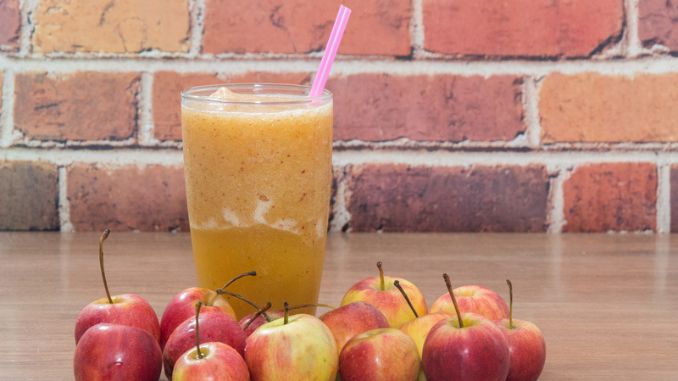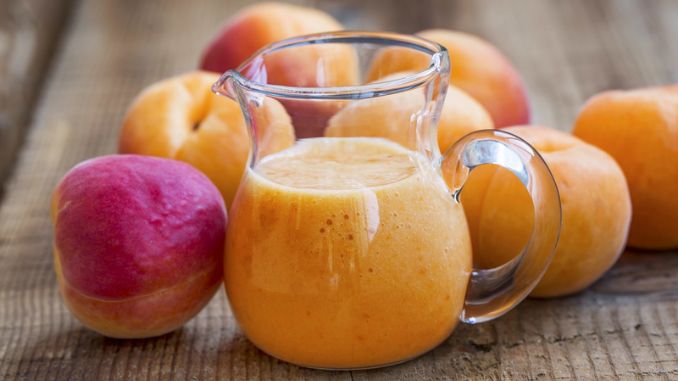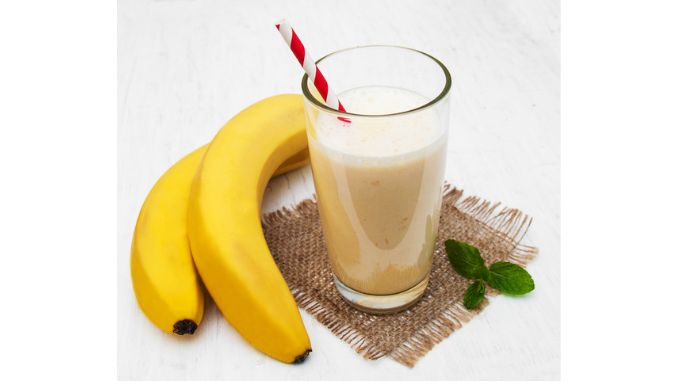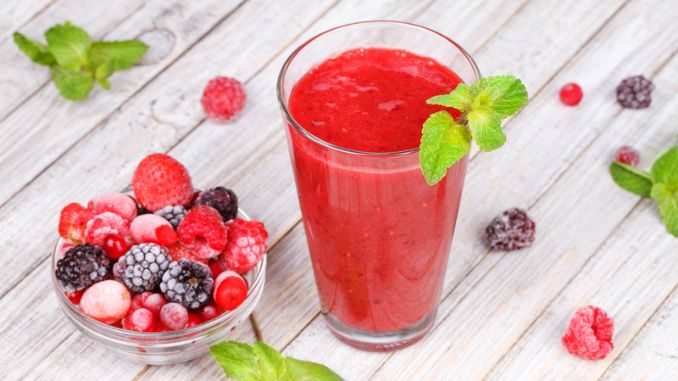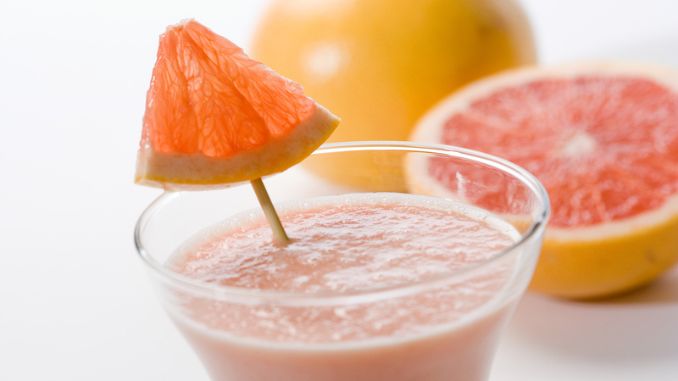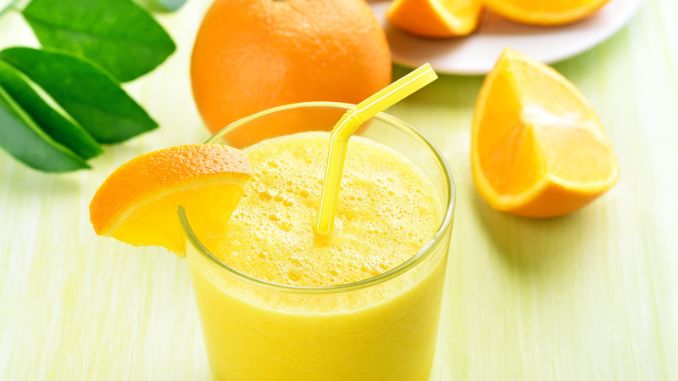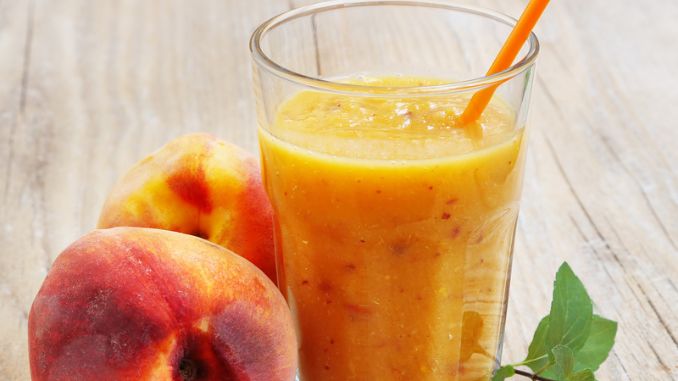Smoothies that can Assist with Weight Loss and Boost Heart Health

Last updated on October 6th, 2025 at 06:26 pm
A healthy lifestyle is about more than just eating right and exercising. It’s also about paying attention to what you eat and drink. Eating the right nutrients and drinking heart-healthy smoothies for weight loss has many benefits, including a healthy heart.
Cardiovascular event is one of the greatest risks associated with heart disease. This can include hospitalization, heart attack, or an unfortunate death from heart failure. Considering these risks, many people are becoming more proactive about their diet and lifestyle choices. Fortunately, you can do some simple things to protect your heart. Elevated blood cholesterol levels increase the risk of developing coronary artery disease (CAD). High LDL cholesterol and low HDL cholesterol are risk factors for heart disease. To help prevent and reverse heart disease, it’s important to regularly consume foods that support your lipid profile and reduce others that lead to it becoming imbalanced.
Did you know heart-healthy drinking smoothies for weight loss is good for the heart? Yes, you read that right. Heart-healthy smoothies for weight loss are not just about sugar and flavors but are also rich in essential nutrients. The key to making a wholesome smoothie that is good for your heart is using ingredients rich in fiber and vitamins. To keep your ticker strong, look for smoothies rich in antioxidants and beta-carotene (a type of vitamin A). It would be best if you were also on the lookout for smoothies with omega-3 fatty acids, which help lower blood pressure and improve circulation.
History of Smoothies
The electric blender's invention in the 1930s led to the first sale of smoothies in West Coast health food stores. The term “smoothie” in recipes and trademarks was widespread by the mid-1980s. Steve Kuhnau's experience as a soda jerk inspires him to experiment with smoothies. Kuhnau created smoothies by combining fruit juices, vegetables, protein powder, and vitamins. Kuhnau was lactose intolerant, so Kuhnau had to taste his concoctions by blending fruit juices and vegetables. It started Smoothie King after early success with smoothie sales. Smoothie King was the first to pioneer smoothie sales and expand across the United States.
This article will explore some great options if you want to drink something good for your heart-healthy smoothies for weight loss.
Below are a few lists of Fruits that are not just great and delicious for heart-healthy smoothies for weight loss but also beneficial for the heart and overall health. Included are snippets of history, trivia for each fruit, and recipes you can enjoy!
1. Apples
The fruit has long been associated with love. It has signified love, pleasure, fecundity, and plenty.
People believe that the fruit we call “apple” originated in the temperate zone of ancient Persia (modern-day Iran). The oldest evidence of apple trees comes from the northwest regions of the Fertile Crescent in modern-day Iran. Dated to 8000 B.C., this tree is considered a “mother tree” for all apples. Over thousands of years, this original tree diversified into many distinct apple species.
Thanks to flavonoids in apples, which are plant chemicals, you can benefit in many ways. Pectin, a fiber present in apples, breaks down in the gut. If you remove the skin before eating an apple, you will obtain less fiber or flavonoids. Research has revealed that apples can slow cancer cell growth and protect the cells in the pancreas, lowering the chances of developing type 2 diabetes. Fruit consumption has been linked with better lung strength, cardiovascular health, bone health, weight reduction, improved brain health, Alzheimer's disease, and age-related memory loss. The sugar in apples doesn't have to worry you. Their carbs are not identical to other sugars that remove dietary fiber.
Trivia:
Malus sieversii is a wild apple native to the mountains of Central Asia in southern Kazakhstan. Recent studies have shown that it is the primary ancestor of most cultivars of the domesticated apple. Therefore, all the apple varieties we eat today descended from this apple!
Recipe:
Blushing Apple Smoothie
- 1/2 cup cherries (pitted fresh)
- 1/2 English cucumber
- 1 apple
- 1/2 cup fresh raspberries
- 1 Tbsp. chia seed
- 1/2 cup water
- 8 ice cubes
Combine the Ingredients and Enjoy!
2. Apricots
The apricot symbolizes optimism and hopes for the future due to its vibrant orange color. It also stands for confidence, joyfulness, courage, and abundance.
The apricot is a stone fruit (drupe) belonging to the genus Prunus. The apricot is classified as a temperate-climate fruit tree, like the peach, cherry, and plum. The ‘ancient history of the apricot is obscure; according to Pliny, the Romans ate apricots as far back as 75–67BC. Its origin needs to be clarified, with China and the Middle East being possible sources.
The first written mention of the apricot fruit in Europe is in a 16th-century herbalist's book. The first botanical illustration of apricot was in 1753 by Louisa Romanet-Plutin in France, who drew it from a living specimen in her garden. The fruit's name comes from the French word for this picture, ‘apricot,' which became anglicized to ‘apricot.' The apricot is classified in Norman F. Houston's 1981 book ‘Fruit breeding and genetics as a Stenospermocarpus (Apocynaceae).
Apricots are a superb source of beta carotene, lutein, and zeaxanthin, all powerful antioxidants that help fight free radicals. Studies have shown that polyphenol antioxidants like flavonoids, which can prevent diseases such as diabetes and heart disease, are abundant in them. Vitamin A is critical in preventing night blindness, a condition caused by insufficient light pigments in your eyes. At the same time, vitamin E is a fat-soluble antioxidant that enters your eyes directly to protect them from free radical damage. It also improves skin health, boosts gut health, and is high in potassium.
Trivia:
Did you know: That in middle eastern countries, apricots are called amandine means “moon of the faith.”. During Ramadan, apricots make a juice that the faithful drink to break their fast or savor during the festive time after sundown.
Recipe:
Joyful Apricot Smoothie
- 1 cup apricot halves (canned, in light syrup)
- 6 ice cubes
- 1 cup nonfat vanilla yogurt
Combine the Ingredients and Enjoy!
3. Bananas
Bananas symbolize various positive things, such as energy, good nutrition, monetary and financial growth, and a healthy lifestyle.
European explorers encountered bananas during the Magellan expedition in 1521 in Guam and the Philippines. Lacking a name for the fruit, the ship's historian Antonio Pigafetta described them as “figs more than one palm long. Portuguese sailors who brought the fruits from West Africa in the 16th century introduced bananas to South America.
Bananas have a variety of health benefits, including weight loss, heart health, and decreased blood pressure. Their resistant starch content, fiber, antioxidants, and digestive health benefits pack bananas with prebiotic benefits. Beneficial bacteria consume the prebiotics in unripe bananas, which are not digested and thus pass through the gut into your large intestine. Bananas are also a rich source of potassium, which may help reduce blood pressure. According to older research and animal studies, individuals who consume plenty of potassium have a 27% lower risk of heart disease. The consumption of bananas also enhances kidney function and may enhance exercise recovery.
Trivia:
A banana is a berry. This is because, botanically, a berry contains seeds inside the flesh, not outside.
Recipe:
Silky Banana Smoothie
- 1 cup banana (sliced, frozen is best, about 1 large banana)
- 1/4 cup Greek yogurt (plain or vanilla)
- 1/4 cup milk (dairy, almond, oat milk, etc.)
- 1/4 tsp. vanilla extract
Combine the Ingredients and Enjoy!
4. Berries
The berry is said to stand for perfection and “sweetness in life and character” in Victorian flower language. Its association with modesty is since it is often found under the leaves.
Since before the start of agriculture, berries have been a significant source of human nourishment. Wild berry picking is still a favored pastime in Europe and North America today, where they were a critical seasonal resource for early hunter-gatherers for thousands of years.
Berries provide potassium, magnesium, vitamins C and K, fiber, and prebiotics—carbohydrates that help promote a healthy gut. The wonderful thing about berries is their connection to brain health. They reduce inflammation, protect brain cells from free radicals, enhance neuroplasticity, and more.
Trivia:
Did you Know? The USDA Human Nutrition Research Center on Aging in Boston says that berries increase brain function by stimulating a natural housekeeping mechanism. Toxic proteins connected to age-related memory loss and mental decline, including Alzheimer's disease, are removed and recycled when the mechanism is activated. Reducing inflammation, protecting brain cells from free radicals, and increasing neuroplasticity also occur.
Recipe
Simple Berry Smoothie
- 1/2 cup berries (mixed organic, fresh, or frozen)
- 1/2 cup coconut cream
- 1 cup water (filtered)
- 2 Tbsp. protein powder (vanilla flavored)
- 1/2 tsp. cinnamon
Combine all the ingredients and enjoy!
5. Grapefruit
Grapefruit is also thought to bring good luck and wealth to the household. Because of its sweet nature, it is said to attract positive energy into your home.
The grapefruit is a subtropical citrus fruit that is a hybrid between two species of sweet orange: bitter orange (Citrus limon) and sweet orange (Citrus sinensis). Grapefruit is a citrus fruit popular for its tangy taste and nutritional value. The fruit is believed to have originated in Barbados and is now grown in many parts of the world. At present, grapefruit is grown in California, Texas, and Florida. The first cultivated plant was born in Jamaica in 1834. In 1859, the French botanist Planchon described the characteristics of a curious tree: a size between a lemon and a sweet orange, with leaves like those of wild plants and fleshy carroty flowers that never appear.
The tree produced fruits similar to oranges but with less acidity. In 1893, the American horticulturist Ruby began to study the sweet characteristics of these citrus fruits. He crossbred bitter oranges (Citrus limon) and sweet oranges (Citrus sinensis) to create this new species. The name ‘grapefruit' comes from the shape of these fruits when cut open. The surface is covered with fine cells that are fibrous and taste bitter, which gives it its name, ‘grape.'
Grapefruit Benefits
Grapefruit is a good source of vitamin C and antioxidants and has many health benefits. Research suggests that grapefruit can help to lower cholesterol, improve heart health, and reduce the risk of some cancers. The fruit is also thought to boost weight loss, as it is low in calories and helps to reduce appetite. Grapefruit is usually eaten fresh but can also be juiced or used in recipes.
Trivia: The grapefruit was originally called “the forbidden fruit” because it may have been a way for people to warn each other of its unpleasant flavor.
Recipe:
Fruity Grapefruit Smoothie
- 1 ⅓ cups fresh red grapefruit juice
- 8 large strawberries
- 2 medium bananas, sliced
- 1 (8-ounce) container of strawberry-banana yogurt
- 2 tablespoons honey
- 1 cup crushed ice
Combine all the ingredients and enjoy!
6. Orange
The orange represents joy, abundance, and refinement. Orange indicates vitality, physical well-being, and a positive attitude toward life.
The orange fruit is a citrus family member and is native to southern Asia. The orange fruit probably originated in ancient China, but the first recorded mention of the fruit was in ancient Egypt. Later, the orange fruit reached Greece, Rome, and North Africa by 700 CE. In the 16th century, the orange fruit spread throughout the world.
Orange is a sweet, juicy fruit that grows on an orange tree. It has tough skin and a juicy, fleshy interior. The orange is a citrus fruit. A single orange contains 76 calories and 16 grams of carbohydrates. The health benefits of oranges include improved digestive health and immune system function. They also contain plenty of vitamin C, which is good for your skin and hair. Oranges are abundant in winter, so they are perfect for adding sunshine to your meals. The bright color can liven up everything from salads to stir-fries!
Trivia:
Oranges are technically a berry! These special berries, known as hesperidium, develop from one flower with one ovary.
Recipe:
Orange Smoothie with Shredded Coconut
- 1 large navel orange, peeled and cut into chunks
- ¼ cup low-fat vanilla Greek yogurt
- 2 tablespoons orange juice
- 2 tablespoons vanilla-flavored almond milk
- 2 ½ tablespoons sweetened shredded coconut, divided
- 1 teaspoon brown sugar
- ½ teaspoon vanilla extract
- 1 cup ice cubes
Combine all the ingredients and enjoy!
7. Peaches
Symbolize the qualities of honesty, innocence, and fragility, also a symbol of immortality and friendship
Peaches are native to China and are believed to have first been cultivated there more than 4,000 years ago. Ancient Egyptians were the first to document their extensive use of fruit as food. These peaches were then imported to Greece and Rome, where they were prized as an ingredient in cooking and medicine. They spread throughout Europe and became an important part of European cuisine by the 16th century. Peach trees arrived in America with European settlers in the 17th century. They quickly became a popular fruit there, as well. The peach became so entrenched in American culture that ‘peach' was used as a symbol of peace at the end of the Civil War (1861-1865), following the use of apples to symbolize peace before it (1685–1713).
Eating peaches is good for the heart because they are packed with nutrients that benefit your health. The fiber source helps lower cholesterol, blood pressure, and blood sugar levels. They are also rich in potassium, which can help prevent the dangerous spike in blood pressure that occurs after eating a high-sodium meal. Also a good source of antioxidants, which may help prevent cancer and other diseases.
Trivia: Peach trees have produced fruit for about 12 years. And each year, a tree can produce up to 66 pounds of fruit.
Recipe:
Creamy Peach Smoothie
- 1 cup frozen peaches
- 1 banana, thickly sliced, frozen
- ½ cup low-fat vanilla yogurt (frozen or regular)
- 1 ½ cups orange juice, tropical fruit juice, or nectar
- 1 tablespoon honey
Combine all the ingredients and enjoy!
8. Tomato
The tomato symbolizes love, fertility, and emotions in many cultures.
The history of tomatoes couldn’t be clearer because two very different plants are called ‘tomatoes.' One plant is a fruit called a ‘tomato,' which comes from Solanum Lycopersicum. This plant originated in the Andes mountains in South America. The other plant is called a ‘pepper,' which comes from the species Capsicum annuum. This plant originated in Mexico and Central America. Researchers have found evidence that both plants were domesticated in Mexico at around the same time. The pepper was domesticated first, around 8000 BC. The tomato was domesticated about 1000 years later, around 700 AD. Both plants spread worldwide as humans traveled with them on their journeys. Finally, they became established in Europe during the 16th century when European settlers brought them from South America and Mexico to the continent.
Tomato benefits
Delicious and healthy, tomatoes are low in calories and fat and rich in Vitamins A and C. They also contain Potassium and Fiber, which help maintain healthy blood pressure levels. Studies have shown that the antioxidant Lycopene in tomatoes may help protect against certain kinds of heart disease and cancer. To get the most health benefits from tomatoes, try to eat them raw or cooked without adding fat. You can also juice them, allowing easier absorption of all their nutrients. The good idea is to drink a glass of tomato juice as a health tonic. Add one tablespoon of raw honey to improve its taste and healing power (honey has antibacterial properties). Also, adding one teaspoon of cayenne pepper powder will give your body a good boost of beneficial endorphins that will keep your mood elevated for the rest of the Day.
Trivia:
The First Tomatoes were Gold and Considered an Aphrodisiac. When they were first introduced to Europe in the 16th century, tomatoes were tiny, golden, and cherry-sized. The appearance of tomatoes inspired many Europeans to name them after gold things, such as the German ‘goldapfel.' The French thought tomatoes were aphrodisiacs and referred to them as ‘love apples.'
Recipe:
Savory Tomato Smoothie
- 4 medium size Tomatoes
- 1/2 cup Tomato Juice, optional
- 1 medium size Carrot, peeled and chopped
- 1 Celery stalk, chopped
- 1/4 teaspoon Ground Black Pepper
- 6 Ice Cubes
- 2 teaspoons Lemon Juice
- Salt
Combine all the ingredients and enjoy!
Takeaway
Heart-healthy smoothies for weight loss are a great way to get your essential vitamins, minerals, and other nutrients into your system in one easy-to-drink glass. They're also super versatile – you can add any fruit or veggie you want so that you can tailor them to your taste. And if you're not a fan of certain fruits or veggies, you can always disguise them with a flavorful smoothie addition. Plus, they're a great way to show your body some love. By filling up on nutrient-rich heart-healthy smoothies for weight loss, you're giving your body the fuel it needs to function at its best. So go ahead and blend up your favorite fruits and veggies – your body will thank you! Trust us; once you start making smoothies at home, you'll never go back to store-bought again!
As we celebrate Valentine's Day, let's remember the true meaning of the celebration. Valentine's Day is about love, and that includes love for ourselves. It's important to nurture our well-being and practice self-love every Day. When we do, we can show up in our relationships with more to give. We can be more present and attuned to our partner's needs. We can be more patient and understanding. So, this Valentine's Day, let's celebrate by committing ourselves. Let's pledge to care for our bodies, minds, and hearts. When we do, we'll be able to share our best selves with the people we love.
Rick Kaselj MS, is a leading kinesiologist and injury specialist as well as co-creator of the best-selling Unlock Your Hip Flexors program. Rick creates exercise programs that help people heal injuries and eliminate pain, so they can go back to living a full, active, healthy life.

